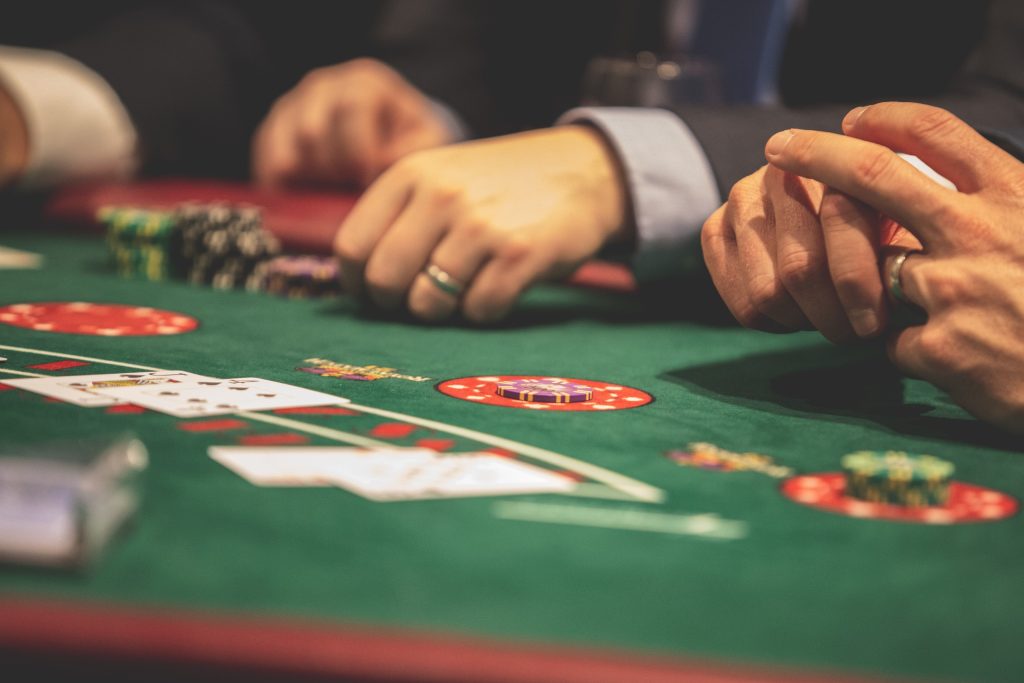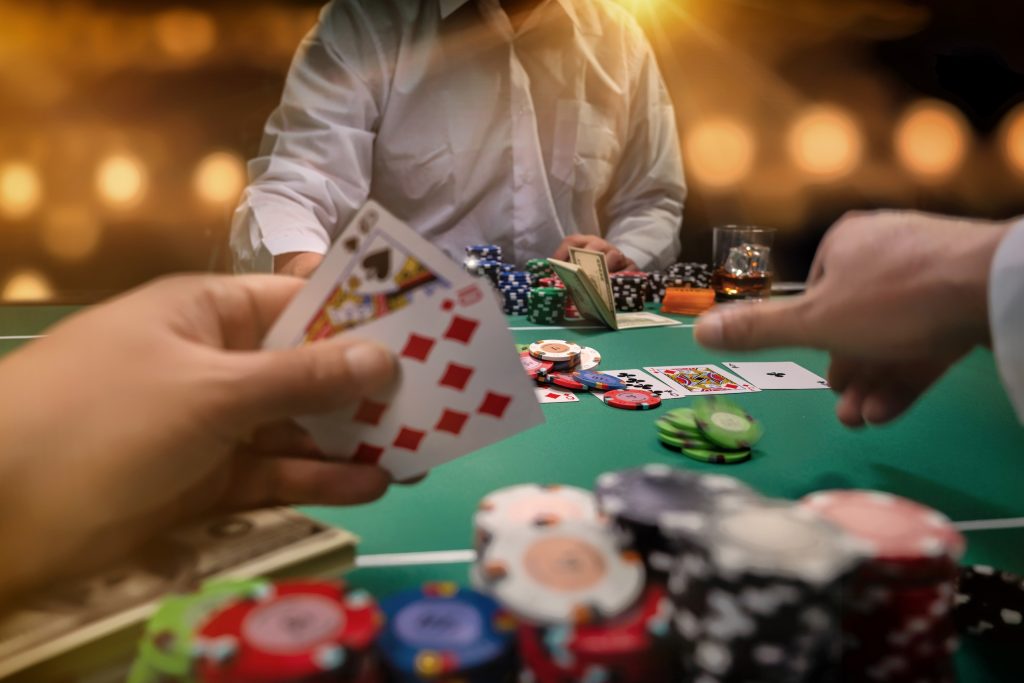Are you tired of always losing at poker? Are you looking for a way to outsmart your opponents and dominate every game? Bluffing is a skill that every poker player needs to master, and it can make all the difference in your success at the table.
Poker is a game of strategy, skill, and psychology. Bluffing is a tactic used to deceive your opponents and make them believe that you have a stronger hand than you actually do. It is a powerful tool that can help you win pots and control the game, but it takes practice and careful execution.
If you want to become a master at bluffing in poker, you need to understand the psychology behind it and learn the art of timing and reading your opponents. Bluffing is not just about bluffing your way to victory; it is about understanding the game, analyzing your opponents, and making calculated moves.

Understanding the Basics
Understanding the basics of poker involves knowing your opponents’ tendencies and playing styles. By observing how they bet, bluff, or fold in different situations, you can gain valuable insights into their strategies. This information allows you to adjust your own play accordingly and make more informed decisions at the table.
In addition, understanding when and how to bluff effectively is crucial in poker. Identifying favorable bluffing situations, such as when your opponents are likely to fold or when the board texture is in your favor, can be the difference between winning and losing a hand. It’s important to recognize the subtle cues and patterns in your opponents’ behavior that may indicate they are vulnerable to a well-timed bluff.
Overall, the basics of poker revolve around understanding the psychology of the game and the players involved. By paying attention to your opponents’ tendencies and knowing when to bluff, you can improve your chances of success at the table. These fundamental skills are essential for any poker player looking to elevate their game.

Developing a Solid Poker Face
Developing a solid poker face is essential for any serious poker player. It requires maintaining a calm and composed demeanor, regardless of the cards you are dealt or the moves your opponents make. Controlling your body language and facial expressions is crucial in order to avoid giving away any hints about the strength or weakness of your hand.
When playing poker, it’s important to keep your emotions in check and avoid showing any signs of frustration, excitement, or disappointment. This can be achieved by taking deep breaths, maintaining a neutral facial expression, and keeping your body language relaxed and controlled.
One way to develop a solid poker face is to practice in front of a mirror or with friends. Pay attention to your facial expressions and body language, and work on keeping them neutral and unreadable. Additionally, learning to manage your emotions and stay focused on the game at hand can help you maintain a composed demeanor even in high-pressure situations.
Overall, developing a solid poker face takes practice and self-control. By mastering the art of maintaining a calm and composed demeanor, controlling your body language, and keeping your emotions in check, you can become a more formidable and unpredictable poker player.
Timing is Everything
Bluffing in poker is a strategic move that can be highly effective when executed at the right moment. Timing is everything when it comes to bluffing. It’s crucial to pay attention to the dynamics of the game and the behavior of your opponents in order to recognize the opportune moments to bluff. For example, if you notice that the other players are playing cautiously or seem hesitant, it may be a good time to make a bold move and push them out of the hand with a well-timed bluff.
In addition, your table position also plays a key role in determining the right moments to bluff. Being in a late position gives you an advantage as you have more information about the actions of the other players. You can use this to your advantage by bluffing when you have a strong read on the situation and believe that your opponents are vulnerable.
Overall, the key to successful bluffing is to be observant, patient, and strategic. By paying attention to the game dynamics and taking advantage of your table position, you can identify the perfect moments to bluff and increase your chances of winning. Just remember, timing is everything when it comes to bluffing in poker.
Reading Your Opponents
When it comes to reading your opponents in a game of poker or any other betting game, analyzing their betting patterns and reactions is crucial. Look for any inconsistencies or changes in their behavior when they have strong or weak hands. If they suddenly become more aggressive or timid, it could indicate a potential weakness or uncertainty in their gameplay.
Pay attention to how they react to certain cards on the table or to your own bets. Do they seem confident or hesitant? Are they quick to call or raise, or do they take their time to make a decision? These reactions can provide valuable insight into their hand strength and mindset.
By observing and interpreting these subtle cues, you can gain a better understanding of your opponents’ strategies and tendencies. This can help you make more informed decisions and adjust your own gameplay accordingly. Whether it’s recognizing a bluff or sensing a vulnerable opponent, being able to read your opponents effectively can give you a significant advantage at the table games.
Building a Bluffing Strategy
Bluffing is an important element of poker, but it requires skill and strategy to be effective. When it comes to choosing the right hands to bluff with, it’s important to consider the board and the potential range of hands your opponents might have. Bluffing with weak hands can be risky, so it’s important to pick spots where you have some equity if called.
Varying bluffing techniques is essential to keeping opponents guessing. By mixing up your bluffs with semi-bluffs, pure bluffs, and value bets, you can make it harder for your opponents to put you on a hand.
Bluffing in different game scenarios, such as pre-flop and post-flop, allows you to keep your opponents off-balance. Adjusting your bluffing frequency based on the table dynamics is also crucial. If your opponents are more willing to fold, you can increase your bluffing frequency, but if they are calling stations, you may need to dial it back.
It’s important to avoid common bluffing mistakes, such as bluffing too often or against opponents who are unlikely to fold. Knowing when to give up on a bluff is also key. Sometimes it’s best to cut your losses and move on to the next hand.
Ultimately, using bluffs strategically to force opponents to fold and win pots can be a powerful tool in your poker arsenal. By carefully considering your bluffing strategy, you can become a more effective and unpredictable player at the table.

Conclusion
By mastering the art of bluffing, you can become a formidable player at the poker table. It’s not just about luck or having strong hands; it’s about understanding your opponents and using that knowledge to your advantage. So, next time you sit down to play Jeetbuzz Poker, remember to observe, interpret, and strategize. Bluff with caution, but also be willing to take calculated risks. With practice and experience, you can become a master of the art of bluffing and increase your chances of coming out on top. Good luck!










